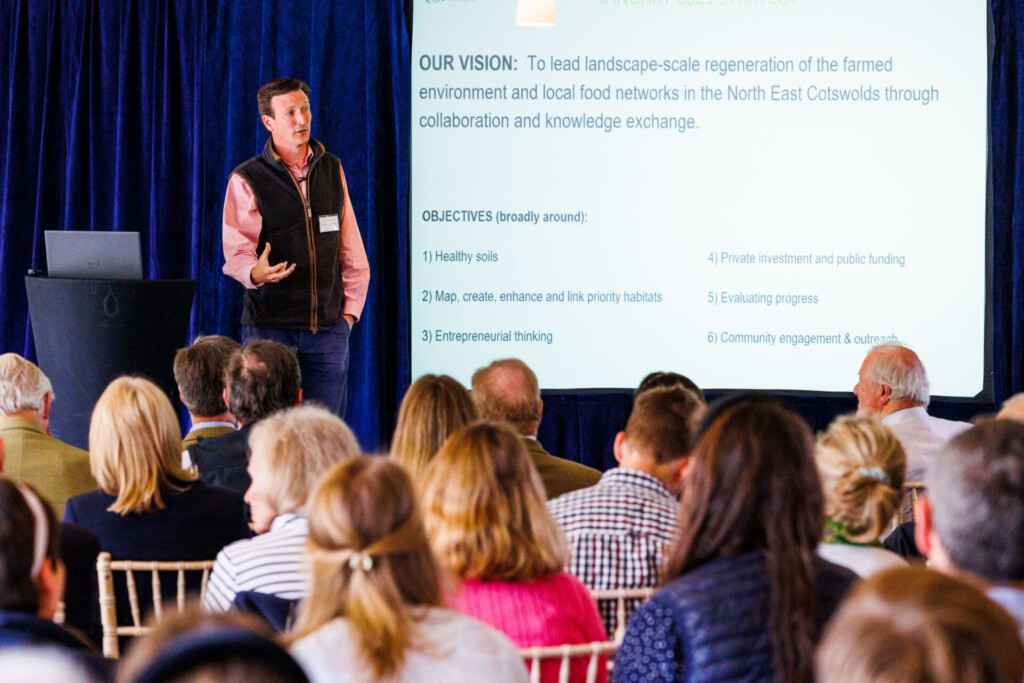Tim Field, from the North East Cotswolds Farmer Cluster, recently gave a talk at our biannual Rural Conference.
He spoke to over 100 guests about landscape recovery through farmer-led projects and the value of working collectively in farmer clusters.

The vision of the organisation? To lead landscape-scale regeneration of the farmed environment and local food networks in the North East Cotswolds through collaboration and knowledge exchange.
The main objectives
Broadly speaking, the six objectives discussed by Tim were as follows:
- To establish healthy soils
- To map, create, enhance, and link priority habitats
- To encourage entrepreneurial thinking
- To gain private investment and public funding
- To continuously evaluate progress
- To pursue community engagement and outreach
Carbon statistics
Tim provided what may seem to be a surprising statistic: according to Andy Neal, for silty clay loam (which is widely considered the most fertile soil type) a 1% increase in soil organic carbon increases water holding capacity by over 350,000 litres a hectare to a depth of 30cm.
He went on to state that even if we use a conservative average of 10 tonnes per hectare of soil organic carbon, over a period of 20 years this will equate to 36.5 tonnes per hectare of CO2.
The Farmer Cluster currently incorporates 140 farms and 43,000 hectares of land. So, this statistic equates to over 1.5 million tonnes CO2e across the farm cluster.
The importance of accurate measuring
Accurate measuring facilitates cluster benchmarking and by pooling data and working out an average to see where your farm stands, you can better inform your decision-making.
However, to gain reliable measurements, you need to be on-site. For instance, being on the ground helps you to establish which land is most liable to flooding, which areas have greater productivity, etc. This is crucial, as landscape recovery requires targeting: the right intervention in the right places.
When data is accurate it can therefore be used to help innovate and prioritise.
If you are interested in joining the North East Cotswolds Farmer Cluster, or you would like to find out more about it, please visit their website.
Contact usContact us
Need more advice?
For help with a legal problem or more information on any of our services at Lodders, please get in touch with our friendly team. You can contact us via the number or email address below, or fill in the form and we will get back to you as quickly as we can.

Contact a member of the team
Read more
Other news, insights and events







